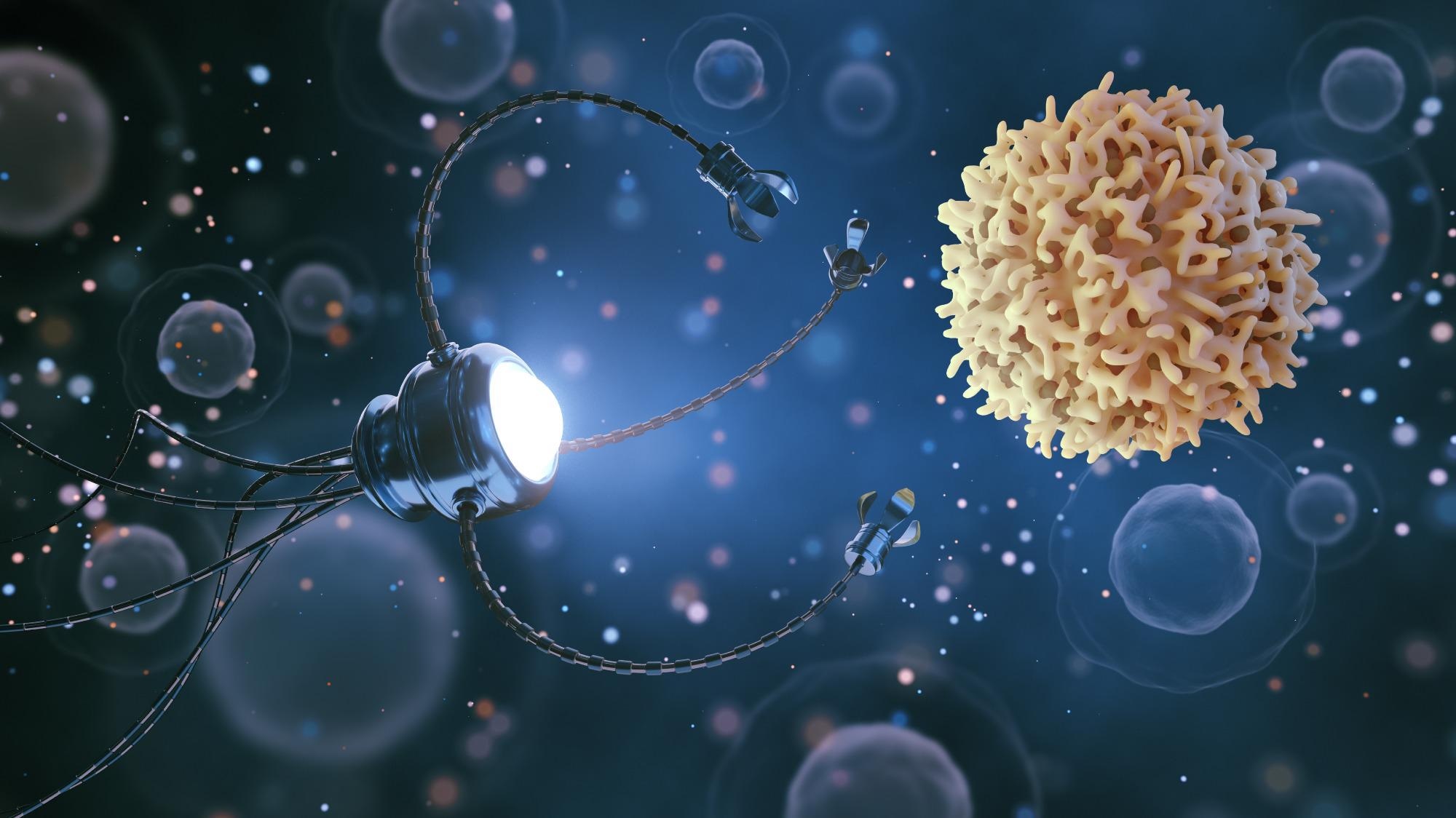Nanoparticles, tiny structures, can be utilized to carry substances to parts of the body — for instance, to provide a chemotherapy drug to a tumor.

Image Credit: Shutterstock.com/K_E_N
Even though such “nanomedicine” showed promise to enhance cancer therapeutics, the survival perks of clinically approved nanomedicines are often modest compared to that of conventional chemotherapy.
A new study reported in the Journal of Controlled Release denotes that nanomedicine might offer extra advantages if it is has been administered at lower and more frequent doses — known as metronomic dosing — instead of the standard maximum tolerated dose of present treatments.
Nanomedicine and metronomic therapy have been regarded as two different approaches to treat cancer. Our analysis suggests that these two approaches can be viewed using the same unified framework as strategies to enhance treatment.
Rakesh K. Jain PhD, Study Corresponding Author and Director, E.L. Steele Laboratories for Tumor Biology, Massachusetts General Hospital
Jain is also an Andrew Werk Cook Professor of Radiation Oncology at Harvard Medical School.
Jain describes that metronomic therapy might help normalize the tumor microenvironment. This implies that it helps in rectifying a few of the abnormalities that develop around tumors and safeguarding the tumor and promoting its spread.
For instance, metronomic therapy appears to enhance blood vessel function and immune activation within a tumor while tumors can transmit signals that settle normal blood flow and block immune cell responses (both of which make them hard to treat). New preclinical studies indicate that nanomedicines can result in similar variations in the tumor microenvironment.
In this study, we hypothesized that nanoparticle formulations, given the controlled release of their payload and the long blood circulation time, can trigger the same cascade of activities as metronomic therapy.
Rakesh K. Jain PhD, Study Corresponding Author and Director, E.L. Steele Laboratories for Tumor Biology, Massachusetts General Hospital
With the help of a mathematical framework and experiments performed in mice, the researchers illustrated that both methods can act as “normalization strategies” to impact the tumor microenvironment and enhance cancer treatments.
Furthermore, in mice with triple negative breast cancer or fibrosarcoma, Doxil — a nanomedicine that is approved to treat metastatic breast cancer and comprises of doxorubicin encapsulated in a lipid sphere — administered via a metronomic schedule could overcome tumor resistance that is normally seen when Doxil is provided through a standard dosing schedule.
Also, a metronomic schedule enhanced the efficacy of the combination of Doxil plus a kind of immunotherapy known as an immune checkpoint inhibitor.
Nano-immunotherapy, which combines nanomedicines with immunotherapy, has high potential to improve patient outcomes, and for this reason, understanding the mechanisms of resistance to and development of strategies to enhance nano-immunotherapy in breast and other cancer types is urgently needed. The results of this work could be a basis for the planning of future clinical studies to improve the efficacy of nano-immunotherapy regimens.
Triantafyllos Stylianopoulos PhD, Study Co-Corresponding Author and Director, Cancer Biophysics Laboratory
Triantafyllos Stylianopoulos is also an associate professor at the University of Cyprus.
The outcomes indicate that integrating nanomedicines with metronomic scheduling can result in a strong attack against hard-to-treat tumors. By acting collectively to normalize the tumor microenvironment, these two strategies provide drugs with a better chance of obtaining cancer cells and targeting them in an efficient manner.
The co-authors of the study include Fotios Mpekris and Myrofora Panagi (University of Cyprus), Chrysovalantis Voutouri (Massachusetts General Hospital), and James W. Baish (Bucknell University).
This work was financially supported by grants from the National Foundation for Cancer Research, the Ludwig Center at Harvard; the Jane’s Trust Foundation; Nile Albright Medical Research Foundation; the U.S. National Cancer Institute grants R35-CA197743, R01-CA208205, R01-CA259253, R01NS118929, U01CA224348, U01CA261842 (to R.K.J.).
Also, the study was supported by the European Research Council (ERC-2013-StG-336839, ERC-2019-CoG-863955); and the Cyprus Research and Innovation Foundation (INFRASTRUCTURE/1216/0052, POST-DOC/0718/0084) (to T.S.), a Marie Skłodowska Curie Actions Individual Fellowship Global (MSCA-IF-GF-2020-101028945) (to C.V.) and Grant R01 HL128168 (to J.W.B.).
Journal Reference:
Mpekris, F., et al. (2022) Normalizing tumor microenvironment with nanomedicine and metronomic therapy to improve immunotherapy. Journal of Controlled Release. doi.org/10.1016/j.jconrel.2022.03.008